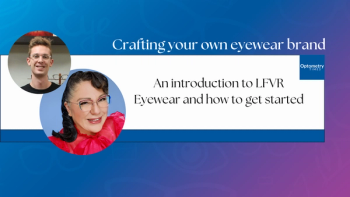
Managing LASIK complications
A U.S. patent was granted to Gholam A. Peyman, MD, in June 1989 for a method of modifying the corneal curvature of the eye. The surgical procedure involved cutting a flap in the cornea, pulling the flap back to expose the corneal bed, ablating the exposed surface and then replacing the flap. The current procedure of laser assisted in-situ keratomileusis (LASIK) was not FDA approved until 1999.
A U.S. patent was granted to Gholam A. Peyman, MD, in June 1989 for a method of modifying the corneal curvature of the eye.
The surgical procedure involved cutting a flap in the cornea, pulling the flap back to expose the corneal bed, ablating the exposed surface and then replacing the flap. The current procedure of laser assisted in-situ keratomileusis (LASIK) was not FDA approved until 1999.
LASIK is now part of the vernacular and is recognized worldwide with millions of procedures performed and still tens of thousands performed annually in the U.S.. The satisfaction of LASIK has been reported to be as high as 94 to 98 percent,1 a rating on Rotten Tomatoes that would warrant a blockbuster!
However, this is still surgery, and with every success there is the potential of a complication. Thus, in order to stay focused on this awesomesauce-yes another word added to the dictionary-procedure, a reminder of how to handle the infrequent complication is warranted.
LASIK patient evaluation
The evaluation of a LASIK patient is the first step in the process of avoiding and managing complications. The evaluation is designed to root out these outliers who would not benefit from this procedure.
In fact, I look at that examination to prove why the patient should not have LASIK surgery as opposed to finding reasons why he should. We know that a cornea can be thinned only so much before it succumbs to ectasia.
Thus, the corneal thickness needs to be commensurate with the amount of tissue ablated to obtain the desired correction. Thus the refractive error is a slightly moving target comparable to the corneal thickness.
Topography needs to be symmetrical and void of any signs of ecstatic disorder. This vetting process must also include a cerebral component, justifying that the patient has a clear understanding of what the procedure will accomplish. Yes, I am specifically referring to those low myopic presbyopes.
Post-LASIK patient recovery and care
Managing a LASIK patient requires quick response time to complications to ensure a favorable recovery. When this procedure was first introduced, surgeons used a blade that rolled over a cornea bulging from tremendous pressures greater than a bottle of root beer filled with Mentos (try it!).
Fortunately the introduction of IntraLase from Advanced Medical Optics and femtosecond technology have made this process bladeless. It is hard to imagine this procedure without the use of the laser; however, it still happens.
Although complications can occur with the laser-such as losing suction or having a short flap or a smaller-than-normal flap-these are limited and scarce. The flap is the one place where you can get a “redo”-that is, if the surgeon does not lift it or try to ablate under the mishap. Short flaps or irregular flaps are limiting for vision only if the ablation is performed. Thus, doing nothing and waiting is the best treatment.
The same cannot be said about a displaced flap, which needs to be replaced immediately.
Striae and folds should be distinguished as clinically significant because they will limit best-corrected visual acuity (BCVA). The use of NaFL stain will give a good indication of the magnitude of these folds.
The appearance of negative staining at the area of the striae is an indication that a re-float (lifting the flap and floating it back onto the striae) is warranted.
However, lifting the flap is a catch-22. Lifting the flap means the edges need to re-epithelialize and consequently could initiate cell downgrowth.
The flap should be lifted when there is an imminent threat to the central vision. Therefore, when the patient has central striae, central epithelial cell downgrowth, changes in the refraction from epithelial cells or an elevated flap from cells, the flap should be lifted and treated.
Differential of flap debris is also important because meibum can be mistaken as epithelial cells. The brownish, glistening of the meibum is easily distinguished from the grayish, dull appearance of the epithelial cell growth.
Meibum doesn’t propagate and thus is not a complication that should elicit any great response.
Postoperative concerns
In the early 2000s we talked about the “shifting sands of the Sahara,” a cute moniker for diffuse lamellar keratitis (DLK) or the inflammatory appearance seen in a large percentage of LASIK patients.
The understanding of this inflammatory response from exotoxins has led to a significant decrease in the occurrence.
However, every LASIK procedure is not immune and recognizing the granular inflammatory response early in the process and increasing anti-inflammatory medications has proven to resolve this side effect.2
Frankly, I don’t consider DLK as much of a complication as I do an over response of the inflammatory mediators. This is in contrast to central toxic keratopathy (CTK), which is a direct insult to the stromal tissue and often is accompanied by inflammation, as seen in DLK.
The CTK patient will have a reduction in vision and may take months to reestablish a healthy stromal bed. Although no treatment is advised, it is important keep the patient close to the practice with monthly evaluations to see the progress.
As the patient heals from this kerato-refractive procedure, there may be slight sensitivity or light sensitivity. Patients may experience-usually around 30 days postop-an inordinate amount of photosensitivity.
The origin is unknown, although it is hypothesized that that regeneration of the nerve endings creates this discomfort. Patients should be placed on a steroid and monitored bi-monthly until resolution.
The inflammation from the procedure may also induce dryness that may be symptomatic. The use of Restasis (cyclosporine, Allergan) around LASIK has been widely reported to help stabilize the vision and reduce symptoms.3
Empirically, this would also help to stabilize glare and halos. The treatment of the inflammation and time has the remarkable ability to eliminate or reduce any unwanted night effects.
Lastly, the change in the curvature and thickness of this refracting tissue is going to create a false reading with your standard measuring of intraocular pressure (IOP). Care should be taken to obtain the most accurate pressure, especially in glaucoma patients in which each mm Hg is critical for stabilization.
The use of a handheld tonometer, such as Reichert’s Avia, can measure pressure away from the ablated cornea and record a measurement that is more accurate. An even more impressive way to measure post-refractive pressure is to incorporate the biomechanics of the cornea, hysteresis.
For example, the Ocular Response Analyzer and the 7C-R, both from Reichert, provide a measurement of the IOP that compensates for changes to the cornea.
As clinicians, we are fortunate to be able to have technologically advanced procedures for our patients. Be diligent in your preoperative discussion and as conscientious in your efforts to manage the postoperative eyes. LASIK is like Bey’s Lemonade, just sweeter!
References:
1.McGhee CN, Craig JP, Sachdev N, Weed KH, Brown AD. Functional, psychological, and satisfaction outcomes of laser in situ keratomileusis for high myopia. J Cataract Refract Surg. 2000 Apr;26(4):497–509.
2.Hoffman RS, Fine IH, Packer M. Incidence and outcomes of LASIK with diffuse lamellar keratitis treated with topical and oral corticosteroids. J Cataract Refract Surg. 2003 Mar;29(3):451-6.
3. Ursea R, Purcell TL, Tan BU, Nalgirkar A, Lovaton ME, Ehrenhaus MR, Schanzlin DJ. The effect of cyclosporine A (Restasis) on recovery of visual acuity following LASIK. J Refract Surg. 2008 May;24(5):473-6.
Newsletter
Want more insights like this? Subscribe to Optometry Times and get clinical pearls and practice tips delivered straight to your inbox.


















































.png)


